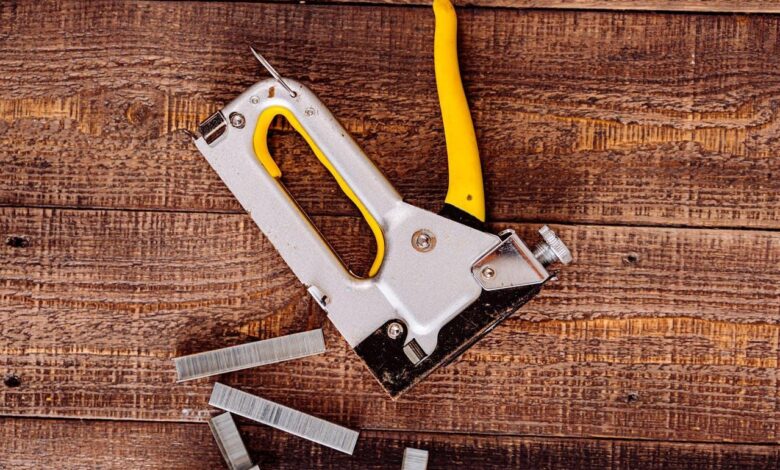What Upholstery Components Do You Actually Need

What really goes into a well-upholstered piece? The truth is, it’s not just fabric and a staple gun. Beneath the surface, a range of upholstery components work together to give your furniture comfort, shape, and durability.
Upholstery Foam
Upholstery foam is the material that determines how soft, firm, or supportive your furniture feels. It also affects how well the furniture holds its shape over time. Not all foam is created equal, and choosing the right type makes a big difference in both comfort and longevity.
You’ll come across a few common types:
· High-density foam: Ideal for seats and frequently used furniture. It offers firm support and bounces back after use.
· Medium-density foam: Softer, but suitable for backs, arms, or light-use chairs.
· Memory foam: Offers contouring comfort and is sometimes layered on top of firmer foam.
· Reticulated foam: A breathable, quick-drying foam used in outdoor or marine furniture.
The thickness and firmness of your upholstery foam should match your project. For example, dining chairs might only need 1–2 inches, while a sofa seat could require 4–6 inches for proper support.
Webbing and Springs
Below the foam, you’ll find the webbing and springs.
Webbing is a network of straps stretched across the frame. It helps distribute weight and supports the foam above. There are different kinds:
· Jute webbing: Traditional, made from natural fibres.
· Rubber or elastic webbing: More flexible and quicker to install.
· Some furniture also uses springs to absorb weight and boost comfort. The most common types include:
· Coil springs: Often seen in vintage furniture. They’re sturdy and offer great bounce.
· Zig-zag springs (sinuous springs): Easy to install and widely used in modern pieces.
Together with webbing, these upholstery components form the base that supports everything above.
Batting and Dacron Wraps
Batting is a soft layer that wraps around the foam. It smooths out edges, fills gaps, and prevents wear on the outer fabric. While it’s easy to overlook, it plays a major role in the final feel and finish of your furniture.
You can find batting made from:
· Polyester: Lightweight, affordable, and hypoallergenic.
· Cotton or wool: Natural options that offer breathability and softness.
· A Dacron wrap (polyester fibre) is often glued or stapled around the upholstery foam to give cushions a rounded, professional look. Without it, your cushions may appear flat or uneven.
Upholstery Fabric and Lining
The fabric you see on the outside is just one part of the upholstery puzzle—but it’s an important one.
Choose upholstery-grade fabric for its durability and resistance to wear. Whether you prefer woven patterns, velvet, faux leather, or canvas, the key is to pick something that matches the look you want while holding up to real-life use.
Many pieces also use lining or dust covers on the bottom. These protect the internal components and give the piece a clean, finished appearance. It’s another layer that improves durability and craftsmanship.
Staples, Tacks, and Adhesives
No matter how good your materials are, they won’t stay in place without proper fasteners.
Staples are the most common choice. A good staple gun makes it easy to attach fabric and batting securely to the frame. For more decorative or traditional work, upholstery tacks are a stylish option.
Adhesives can also play a supporting role—especially when attaching upholstery foam to wooden bases or securing fabric layers before final stapling.
These small upholstery components often make the biggest difference in ease of assembly and how well everything holds together over time.
The Frame and Base Materials
The strongest fabric and foam in the world won’t help if the furniture frame is weak.
Most DIY upholstery projects assume the frame is intact. But it’s worth checking for cracks, wobble, or damage. If needed, reinforce the frame before adding new layers.
Some projects also use plyboard, corner blocks, or tension supports under the webbing or springs. These hidden materials help distribute weight and prevent sagging.
Do You Need Everything?
Not all projects require a full set of upholstery components. It depends on what you’re working on.
Light-use chairs might need just foam, fabric, and staples. High-use seating like sofas benefit from webbing, springs, batting, and a more advanced build. Headboards or benches might skip springs and go for foam and batting on plywood.
The key is to match your components to the demands of the furniture. The more it’s used, the more support it needs underneath.
Final Thoughts
Knowing how upholstery foam and upholstery components work together helps you plan, budget, and build with confidence.
Take time to get the basics right. Choose the right foam. Understand your frame. Use strong fasteners and finish with the right batting and you’ll get the result you want.



